In deep in Indochina: Cambodia's remarkable new hideaway resorts revealed
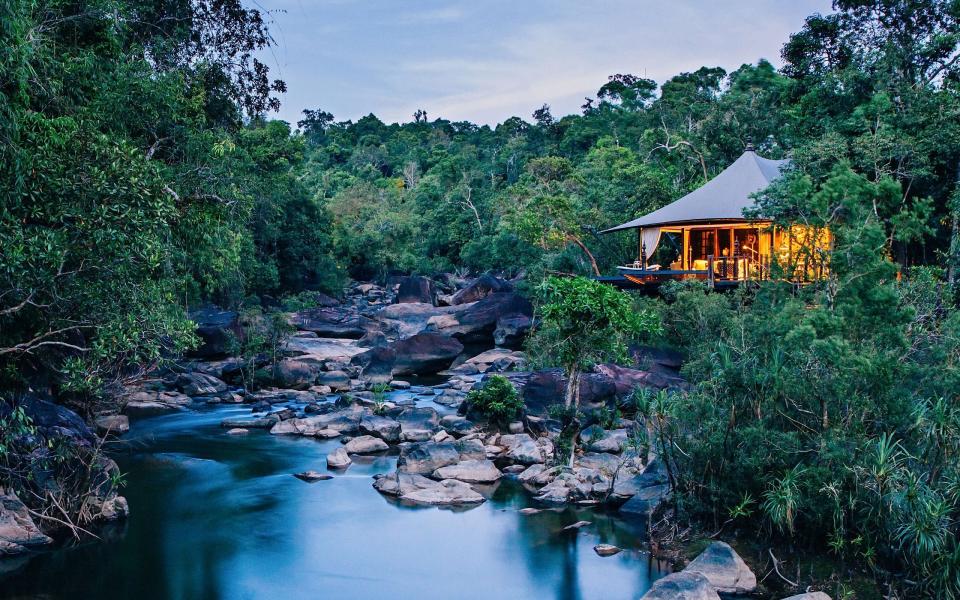
In some distant bar, in a steamy corner of Indochina, I once met a man who had spent a lifetime trawling through Asia. He was a Graham Greene character, dishevelled, weary, wrestling with his soul after several G&Ts. We talked of places, of here and there. In his crumpled suit, he seemed unable to raise much enthusiasm for anywhere in particular.
Until I mentioned Cambodia. Suddenly, his eyes lit up. ‘The last paradise of Indochina,’ he said. ‘Once you get beyond those spooky temples.’
My friend’s spooky temples are the magnificent ruins of Angkor, one of the must-see experiences in south-east Asia. Encased in vines and strangler figs, the crumbling façades, with their tributes to mysterious gods, are a place for explorers to commune with the ancient world while channelling their inner Indiana Jones. More than two million visitors a year do just that, and little wonder: this is one of the world’s most astonishing archaeological treasures.
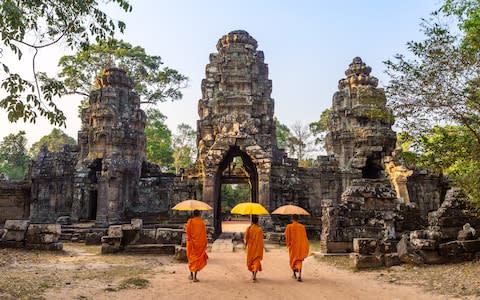
But of course my friend was right. The irony of Cambodia has always been that so few of Angkor’s visitors have stayed to explore the country beyond the ruins. At least, until now. Savvy travellers are finally beginning to realise that Cambodia is one of the most delightful destinations in south-east Asia. All those romantic notions of Indochina – the sleepy river towns along the Mekong, the rural patchwork of paddy fields and temples, a coast scattered with uninhabited islands, the restrained charm of the people – seem to linger here just as they are ebbing away in Cambodia’s two boisterous neighbours: Vietnam and Thailand.
And this year sees the launch of several spectacular luxury properties, meaning more adventurous travellers can now explore these distant pastures and shorelines in uncompromised comfort. I set off in pursuit of the other Cambodia, the one away from Angkor.
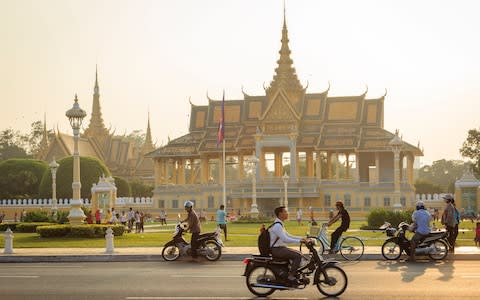
Things started well, in Cambodia’s capital Phnom Penh, where I met a monk who could sort out bad luck. Once known as the ‘Pearl of Asia’, Phnom Penh is small enough to still feel friendly and charming, in a region where so many cities are traffic-choked monsters. Tree-lined colonial avenues lead to the river, with its wide embankment and passing sampans. The gilded spires of the Royal Palace rise beyond old walls, and in the early mornings saffron-robed monks still make their rounds with alms bowls.
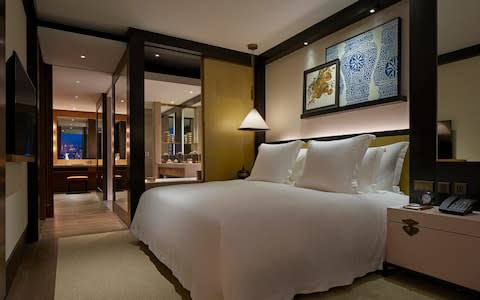
The elegant new Rosewood hotel, an oasis of refined luxury with sweeping views over the city and the river, is the place from which to take it all in.
Up at Wat Phnom, I made my way through clouds of incense with a plate of offerings – fruit, jasmine flowers, some hard currency – for a bad-luck bashing. Swishing bundled joss paper round my head and shoulders like someone trying to clear away midges, a monk shushed away any bad luck that might be lingering about my person. Delighted by this upturn in my fortune, I celebrated in the evening at a riverside café where jugs of draft beer and plates of grilled crickets were ferried to the tables.
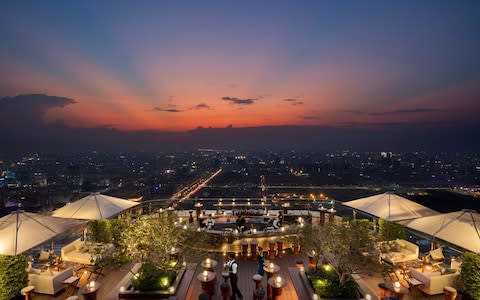
Fifty years ago, the luckier inhabitants of Phnom Penh headed to the south coast, some 280 or so miles fringed by the Gulf of Thailand, for weekends and holidays. Littered with smart villas and hotels, it became known as the Cambodian Riviera.
During the country’s heartbreaking troubles, this languid retreat was abandoned as first the Khmer Rouge and then Vietnamese invaders bequeathed it other meanings, other memories. But the past in Cambodia really is another country, distant and incomprehensible, and the old Riviera is now finding a new life.
At first glance, that new life seems to be Chinese, at least in the city of Sihanoukville. A few years ago, it was a sleepy seaside town of fishermen and market gardeners. Today, it is on its way to becoming a Cambodian Macau, with high-rise hotel complexes sprouting like weeds. But turn your back on Sihanoukville and, further down the coast, the old towns of Kampot and Kep still seem to linger in some delightful time warp.
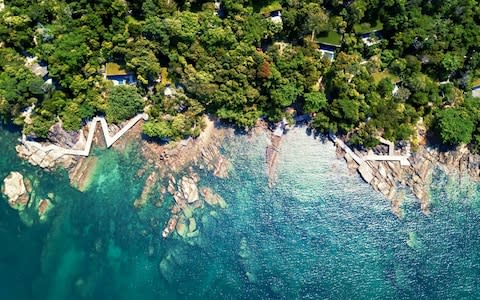
But the secret of this coast is the islands. Down the length of the old Riviera, they are moored like ships, all green and verdant, with tumbling jungle and white beaches. This is what southern Thailand was like half a century ago – a scattering of pristine islands, a few thatched villages, fishing skiffs bobbing at the end of wooden piers – before the backpackers, the full-moon parties, the package tourism arrived. If Cambodia really is a paradise, this is where it is found.
The pioneer among these islands was Song Saa in the Koh Rong archipelago, a beautiful resort created seven years ago by an Australian couple based in Phnom Penh. Small-scale, high-end and low-impact, it had a personal bohemian style that owed something to the traditional villages of the archipelago. Weathered reclaimed planks were set off by lustrous hardwoods, rich fabrics framed distressed art pieces, and untrimmed thatch spilled over terraces of cushioned divans and plunge pools.
Inspired by Song Saa’s success, two new properties have just opened among these islands, bringing a new level of sophistication to this coast. Both are barely 10 minutes from the mainland quay at Ream, just to the south of Sihanoukville, but a million miles from the click of casino chips.
With an island all to itself, Six Senses Krabey has a sense of castaway freedom. It is a place apart, an oasis of greenery, birdsong and sea breezes, with a world-class spa and food that deserves a Michelin star.
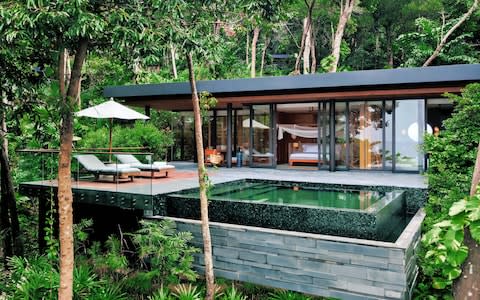
Wood, stone, tiles and local decorative touches – such as fishing nets, check krama scarves and bird-nest lampshades – create a natural vibe that sits easily among the lush vegetation. Villas are framed by jungle, and in the mornings I woke to private views across a private terrace and a private plunge pool to the sea.
Australian chef Todd Adams oversees two splendid restaurants: Tree, filled with dappled light from the surrounding forests, and Aha overlooking the water. Keen to support Cambodian enterprise and reduce food miles, he has sought out local suppliers of organic produce as well as developing the resort’s own farm.
Fishermen from neighbouring islands supply fresh grouper, tiger prawns, barramundi and sea bass. Take a moment before lunch and Adams will show you how to make a fabulous sashimi of kobe with coconut cream, green chili, lime, pomelo and sweet basil.
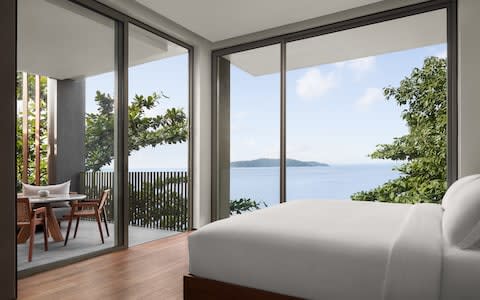
A boardwalk takes you round the rocky shore, skirting grey boulders and the wash of the waves, to Khmer House, the central focus of Krabey. Above the 27m infinity pool, there is a sunset bar, a charcuterie bar, a homemade ice-cream parlour, a herb garden, hammocks, a firepit, and the sense that life should always involve star-filled evenings, warm ocean breezes, the sound of waves and freshly picked mint in your mojito.
The Alila Resort, Alila Villas Koh Russey, on a neighbouring island, has gone for a more modernist architectural style. Its cool grey walls, lightened with lush redwood flooring and framed by wide reflective pools, call to mind an art gallery. Turning its back on the island’s forests, the resort faces one of the region’s greatest beaches – over a mile of white sand so squeaky I thought I must be waking people in their villas 150ft away as I passed on my early morning stroll.
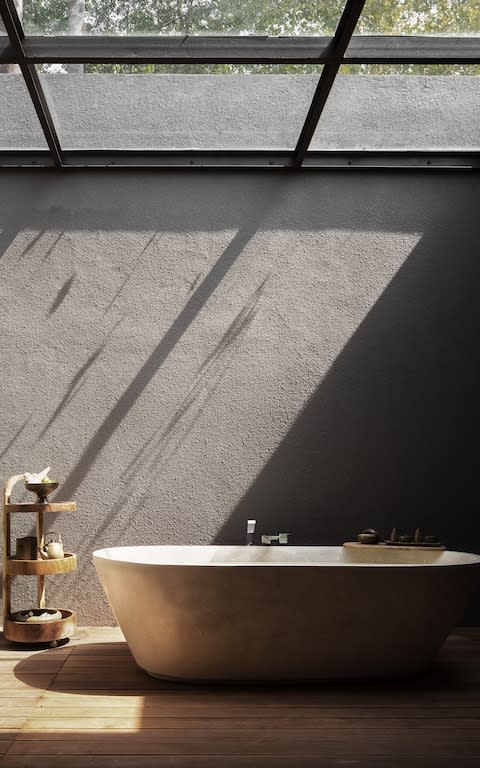
An impressive swimming pool apparently mimics the outline of Angkor Wat, though you would probably need to be a passing fish eagle with a knowledge of early Hindu architecture to really get the allusion. There are sunset cruises, picnic lunches, an excellent spa, a beach shack bar with the best prawns I have ever eaten, and a vast banyan tree – beneath which there are meditation sessions that will allow you to contemplate the challenge of getting back into your life at home. At night, candles flicker across the terrace tables and moonlight sweeps the beach.
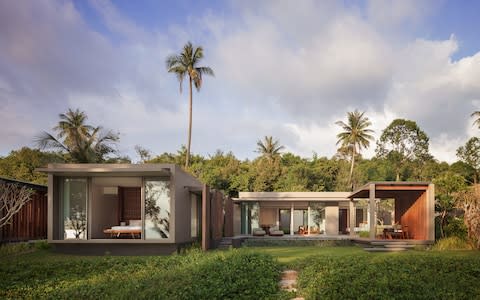
But it was the last of the three new properties, as I headed inland to the southern flanks of the Cardamom Mountains, that was the star turn. Like a cross between Willy Wonka and Frank Lloyd Wright, Bill Bensley has taken hotel and resort design in Asia to a whole new level with a range of properties from Bangkok to Siem Reap, from Luang Prabang in Laos to Phu Quoc in Vietnam. All are elegant, theatrical and, above all, fun. Shinta Mani Wild is his latest project.
In the midst of the largest remaining tropical rainforest in south-east Asia, Bensley’s camp would have been how Stanley camped during his search for Livingstone, had he had the luxury of 500 porters, an unlimited charge account at Harrods, and a funky taste for collectible oddities.
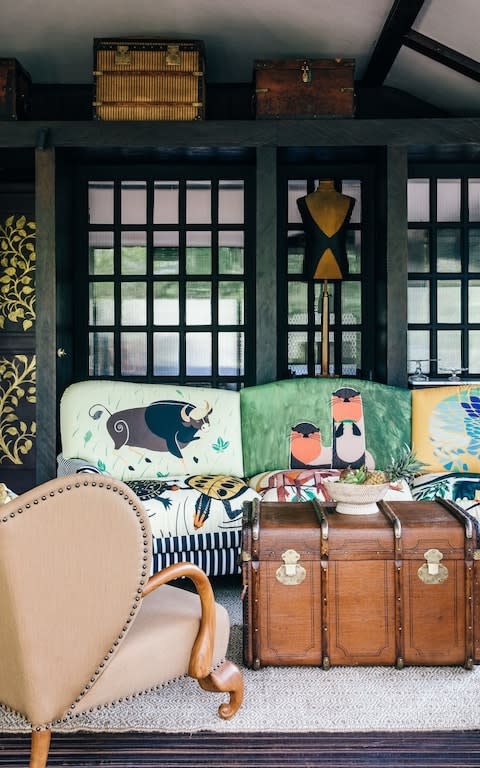
But as Cambodia grapples with how to best direct its nascent tourist industry, it also suggests how the country’s future might look if it embraces responsible development. Bensley outbid a logging firm to secure a 99-year lease for the 865-acre site and has committed to providing local poachers with alternative employment. For the foreseeable future this Eden of the East, home to about 50 types of birds and almost 200 types of edible plants, will be protected.
It’s fitting, then, that rather than driving to the entrance in retro 1950s jeeps, guests can zip line above the forest canopy and over a waterfall to land directly in the open lobby of deep leather armchairs and steamer trunks. At the backlit bar, a smiling barman will be ready with the welcome cocktails.
Just 15 tents are discreetly located along a riverbank, all well out of sight of one another. I say tents, but you could be forgiven for not realising you are under canvas. Furnished with vast beds, campaign desks, double copper sinks, a divine shower and wardrobes the size of Alaska, there is enough space for a yoga class.
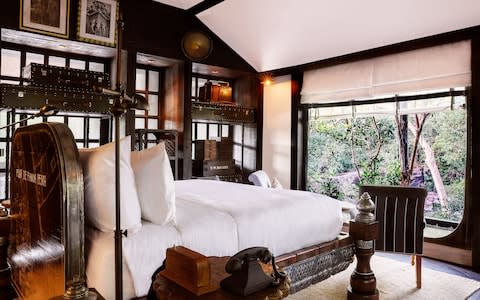
Outside on the terrace are armchairs, a long sofa and a rather dangerous all-inclusive private bar. Finally, overlooking the river, is an outdoor bathtub. Each tent comes with a discreet butler who can be summoned on the kind of old-fashioned Bakelite telephone that Hercule Poirot might have used to call Inspector Japp.
Days here are spent on the kind of traditional pursuits that Hercule might have approved of. I went fishing with a reel-less Japanese tenkara rod. Like anything Japanese, this version of fly fishing is stripped to meditative simplicity, so that catching fish becomes a metaphor for life’s harmonies. Unfortunately, I didn’t catch any fish.
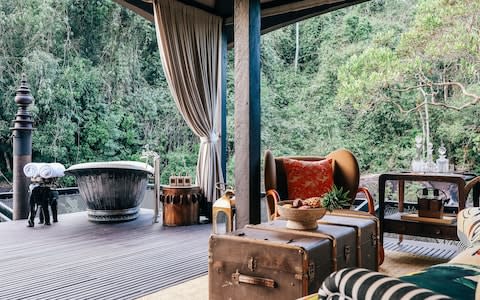
I went on an orchid walk with the resident orchid-hunter, a man whose passion was wildly infectious. I kayaked on the river, and dined in style at a table overlooking the waterfall. I had a spa massage in a secluded forest glade. Early one morning, I set off with the Wildlife Alliance rangers, funded by the camp, who patrol the forests looking for poachers and illegal logging.
It was while lounging in my bathtub in the moonlight with a glass of champagne that it occurred to me I must pass on to my friend in the bar the details of the monk at Wat Phnom. I have no idea what was going on with the joss sticks and the bad-luck banishing, but it seemed to have worked. A couple of days at Shinta Mani Wild were the height of good fortune. I too had found a paradise; this was an Indochina my friend would love.
Tailor-made tour operator Lightfoot Travel (020-3950 5105) offers 11 nights in Cambodia from £5,725 per person, based on two sharing, including international and internal flights and transfers. The itinerary includes two nights at the new Rosewood Phnom Penh, three nights at Alila Koh Russey or Six Senses Krabey Island on a B&B basis, three nights at Shinta Mani Wild on an all-inclusive basis, two nights at Phum Baitang in Siem Reap to explore the temples of Angkor and one night at the Mandarin Oriental in Bangkok before departure.
Sign up for the Telegraph Luxury newsletter for your weekly dose of exquisite taste and expert opinion.

 Yahoo Finance
Yahoo Finance 